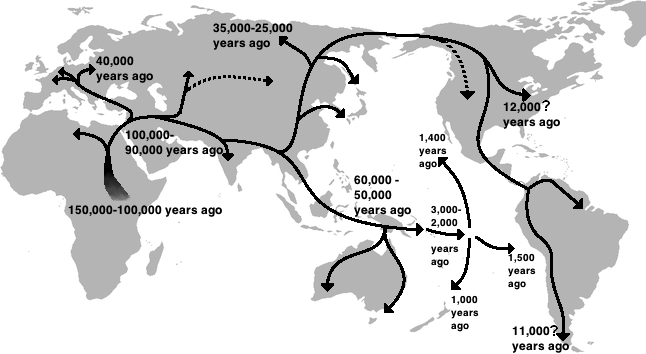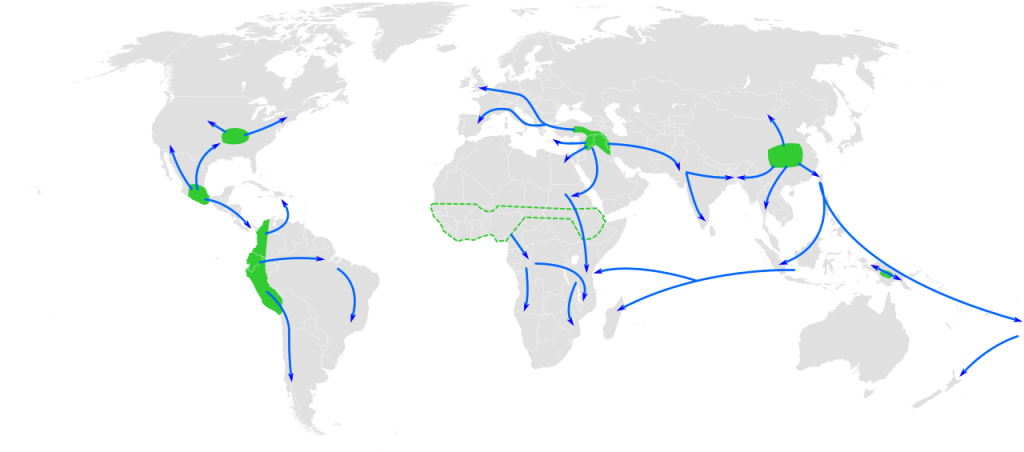4.9 The Emergence of Us: Fully Modern Humans
Modern H. sapiens first appeared between 250,000 and 200,000 years ago in Africa. Sometime around 40,000 years ago there was an abrupt change in tool technology, subsistence patterns, and symbolic expression among H. sapiens. These changes seem to have occurred almost simultaneously in Africa, Asia, Europe, and Australia (after our initial migration out of Africa, see Figure 4.10). While there is evidence of some creative artistic activity in earlier groups like the H. neanderthalensis, they were not on the same scale as that seen during the Upper Paleolithic – referred to as “the human revolution.” The level of cultural changes associated with this period has been compared to the level of change that occurred during the Industrial Revolution of the 19th century.
Among these changes, H. sapiens began assembling a much more elaborate tool kit by constructing tools from a wider variety of materials including antler, ivory, and bone. During the Upper Paleolithic, humans shifted from the manufacture of round flakes to the manufacture of blade tools. This construction method is known as the blade tool industry. Blades are stone flakes that look like modern knife blades – they are long, thin, and flat, with a sharp edge. They have a much longer cutting edge than flakes do and are thus more efficient than older technologies. The prepared-core technique of the Mousterian that provided pre-shaped flakes was refined and extended to create pre-shaped blades.

Around 11,700 years ago, humans’ impact on their world and each other would be forever changed. The first Neolithic Revolution occurred in the near east regions of Southeast Asia and the Middle East. A key marker of the Neolithic Revolution is the full domestication of plants and animals, leading to a surplus in food. This transition from hunting and gathering to storage of surplus resulted in changes to the daily lives and routines of humans. Individuals began to specialize in specific crafts (e.g., pottery, animal husbandry) and the concept of property emerged. Family lineages were beginning to be traced, and excess goods meant exchange between distant groups, spurring an economy of barter and trade. And much of the rest is, as they say, history.


